The Musician's Building, 50 West 67th Street: Review and Ratings
between Central Park West & Columbus Avenue View Full Building Profile
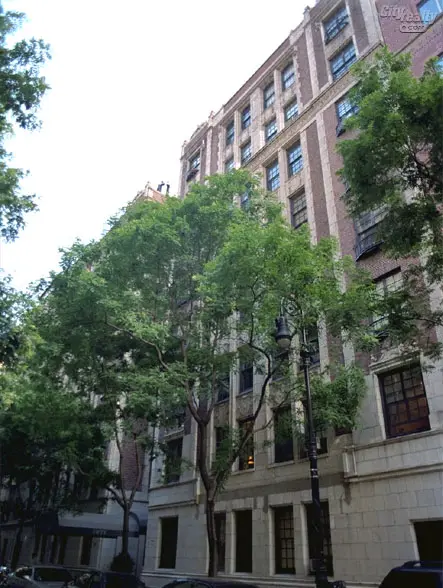

West 67th Street between Central Park West and Columbus Avenue is one of the city's greatest side-streets, full of residential buildings designed with tall artist's studios and considerable detail.
While most of them were designed with painters in mind, this building at 50 West 67th Street was specifically designed for musicians and is known as The Musicians Building.
The 8-story building was erected in 1917 and designed by Shape & Brady. The neo-Renaissance-style building has 60 cooperative apartments, a canopied entrance and a very handsome lobby. Apartments have 10-foot ceilings and windowed eat-in kitchens and fireplaces and private storage and is pet friendly.
In 1988, the building got into a controversy with Capital Cities/ABC Inc., which was building a through-block office/studio building just to its west.
In a January 17, 1988 column in The New York Times, Paul Goldberger wrote that "this is a story of a good piece of architecture that some people think is in the wrong place - or perhaps it is better described as the story of how, in New York, you can never win."
"West 67th Street," he wrote, "is a remarkable enclave of exceptionally gracious early-20th-century apartment buildings, many of which contain double-height studios originally constructed to house artists. This is a place like no other, a self-contained village as much as it is a New York City block. It is not the sort of site on which one would expect to find the skyscraper headquarters of a major television network....Indeed, the relationship between the network and its neighbors has become so bitter that the network could not even reach an accommodation with the cooperative at 50 West 67th Street, which abuts the new building on the east, for permission to allow workers onto its roof. Instead, ABC took the drastic move of instructing its architects, Kohn Pedersen Fox, to cut a four-foot notch into the new building so that construction equipment necessary to build the east wall of the new tower would not have to hang over its neighbor's roof."
"Another tale, then, of a greedy corporation," the article continued, "so intent on destroying the ambiance of New York with another intrusive mega-building that it could not even make the tiniest gesture toward its neighbors? Hold on. What makes this story so perplexing - and so indicative of the extent to which virtually irresolvable forces have become entrenched in the business of getting things built in New York - is that the new ABC headquarters shows every sign of being an excellent, perhaps even a distinguished, building. It is a handsome object in itself and, more important, it has been designed with unusual concern for the existing architectural context. On purely architectural grounds, this is actually the sort of building most communities cry out for, not the sort they reject."
"What, then, is the fighting about? Much of it," the article said, "emerges out of the peculiar nature of West 67th Street - this special block is right on the cusp of the West Side's change from a mixed and heavily commercial area to a primarily residential one. For all its unusual character, West 67th Street has none of the isolation of a real village; it has one kind of neighborhood right below it and another kind just above it, and the zoning laws of the city, alas, make commercial construction here entirely legal. For years ABC has had studios in and around West 66th and West 67th Streets, but in older structures that did not disturb the fundamentally residential and casual ambiance of the block. A decade ago the network began a long-term construction project in the area, and at that point the tone of West 67th Street began to change. Two large studio buildings, also designed by Kohn Pedersen Fox, were the first intrusions; the new headquarters is actually the fourth new ABC structure, but by far the tallest."
"The neighbors," the article said, "are taking issue less with pure architecture, then, than with the intervention of a major corporate presence in their once tranquil enclave; in this sense the tension between ABC and West 67th Street has as much in common with the sort of battle that goes on between corporations and residents of suburbs like Greenwich, Conn., as it does with urban battles. Yet this struggle does contain one aspect that is particularly characteristic of New York, and that is the degree of polarization it has engendered. When it became clear that the building was sure to proceed, the neighbors asked for certain changes to increase its compatibility with the residential buildings around it; their only negotiating point was the right of access to the roof of 50 West 67th Street. Ultimately ABC called the neighbors' bluff, deciding it would rather order the four-foot notch so that the building could proceed without any agreement at all - a gesture that only served to confirm the neighbors' view of the corporation as arrogant. In the end, however, the architects did make many of the changes the neighbors requested, but quietly, without letting the neighbors know. (It is one of the greatest ironies here that the interests of the architects and those of the neighbors in getting a building that would fit comfortably into the neighborhood coincided, but neither side would dare admit this publicly.) If there is any saving grace to this pointless conflict, it is in the architecture. It was good to start with, and actually became somewhat better as the result of the changes that made the rear façade on West 67th Street more residential in character, with more granite and more limestone and less glass than as originally designed. The style is a kind of abstracted classicism that Kohn Pedersen Fox has made something of a trademark, but the best thing is the overall shape - the building is to have a rectilinear base to fit into the street wall of both West 66th and West 67th Streets, with setbacks melding gradually into a slab tower with large curves at the north and south ends. It is a form both strong and soft, respectful of the street and yet less intrusive on the skyline than it might otherwise be. The brickwork is excellently detailed, with ornamental courses breaking up the sense of a single mass; the only wrong note is in the inverted mansard roof at the top, making this dignified tower meet the sky with an uncharacteristic touch of shrillness."
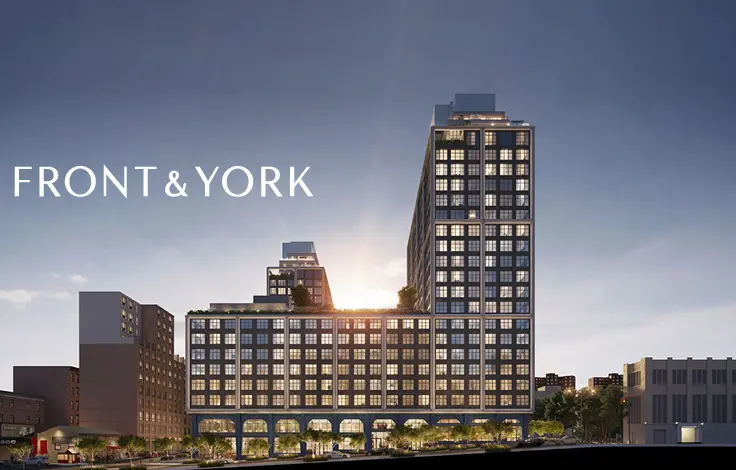
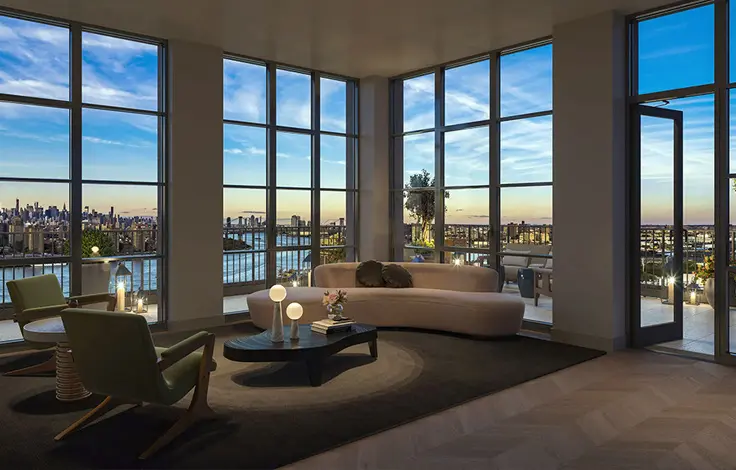

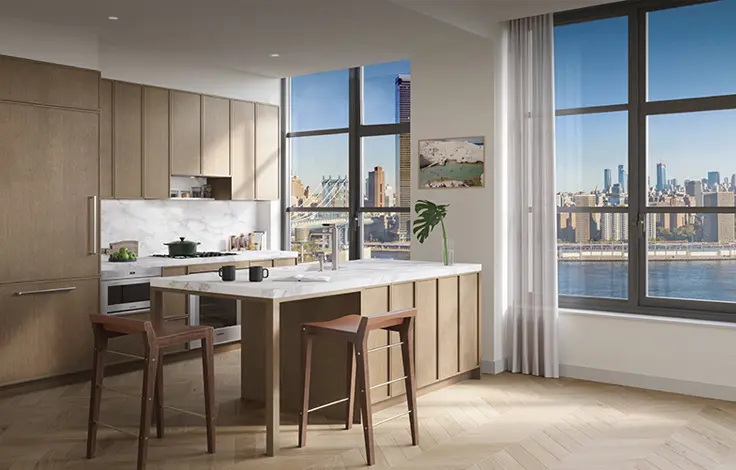
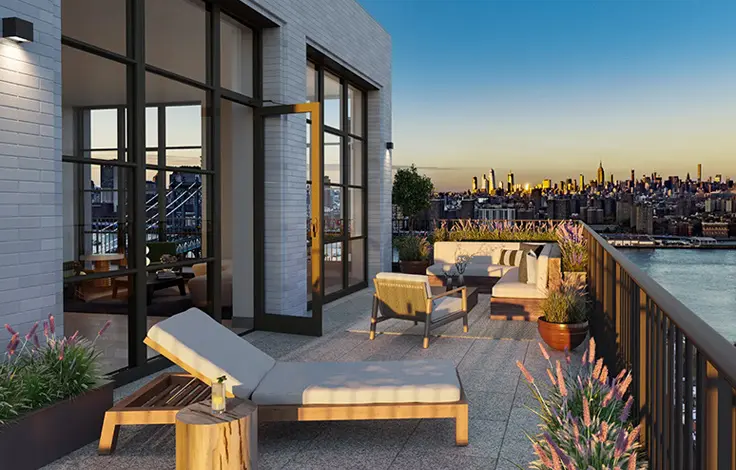
 6sqft delivers the latest on real estate, architecture, and design, straight from New York City.
6sqft delivers the latest on real estate, architecture, and design, straight from New York City.
